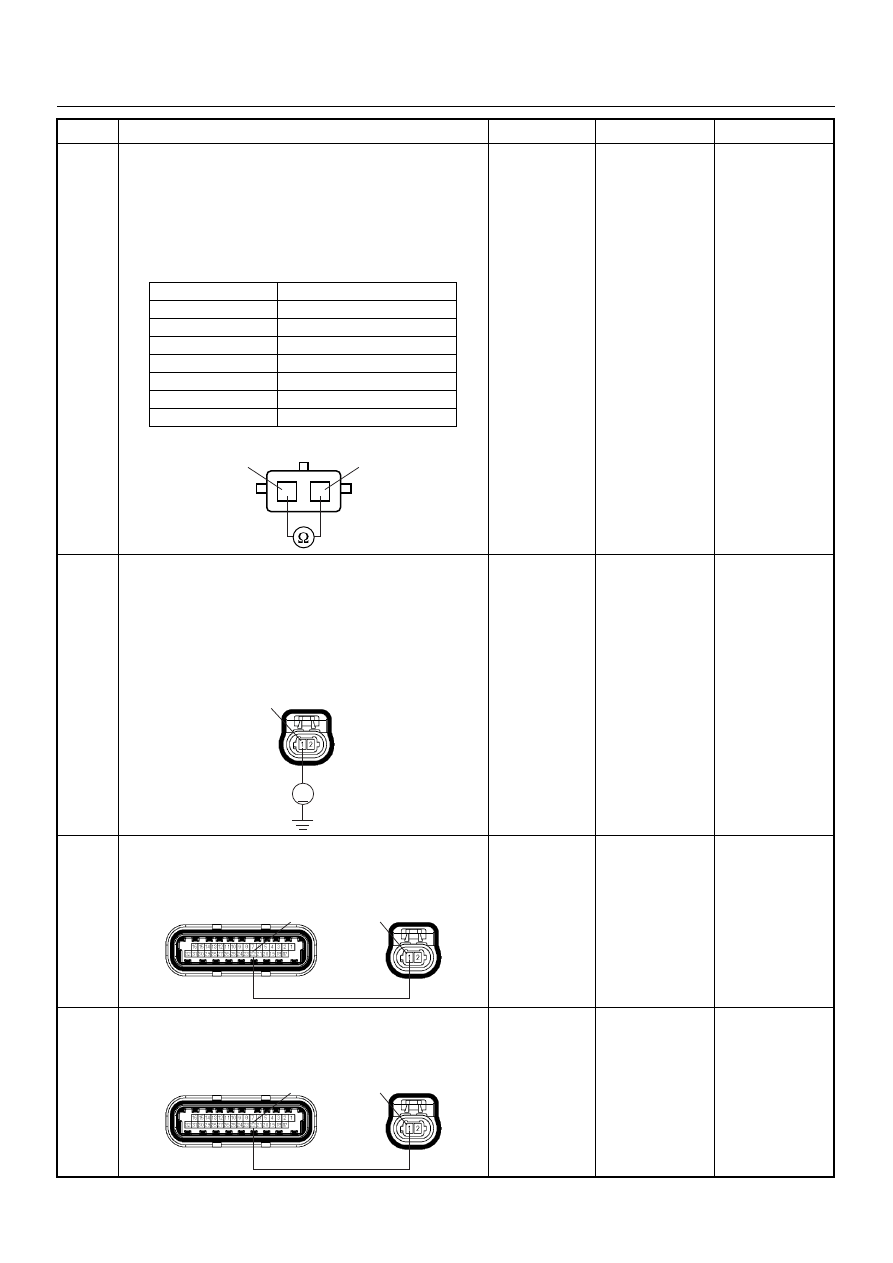Isuzu D-Max / Isuzu Rodeo (TFR/TFS). Manual - part 221

ENGINE DRIVEABILITY AND EMISSIONS
6E–125
6
Using the DVM and check the IAT sensor.
1. Ignition “Off”, engine “Off”.
2. Disconnect IAT sensor connector.
3. Measure the resistance of IAT sensor.
Does the tester indicate standard resistance as shown
in the following table?
Standard
resistance
Go to Step 7
Go to Step 12
7
Using the DVM and check the IAT sensor signal
circuit.
1. Ignition “On”, engine “Off”.
2. Disconnect the IAT sensor connector.
3. Check the circuit for open circuit.
Was the DVM indicated specified value?
Approximately
5.0V
Go to Step 10
Less than 1V:
Go to Step 8
More than
specified value:
Go to Step 9
8
Repair the open circuit between the ECM and IAT
sensor.
Was the problem solved?
—
Verify repair
Go to Step 14
9
Repair the short to voltage circuit between the ECM
and IAT sensor.
Was the problem solved?
—
Verify repair
Go to Step 14
Step
Action
Value(s)
Yes
No
Temperature (°C)
Resistance (
Ω) (Approximately)
-20
32040
0
9788
20
3516
40
1439
60
656
80
327
100
175
IAT Sensor
1
1
2
2
V
C121
1
C56(J2)
C121
1
22
C56(J2)
C121
1
22